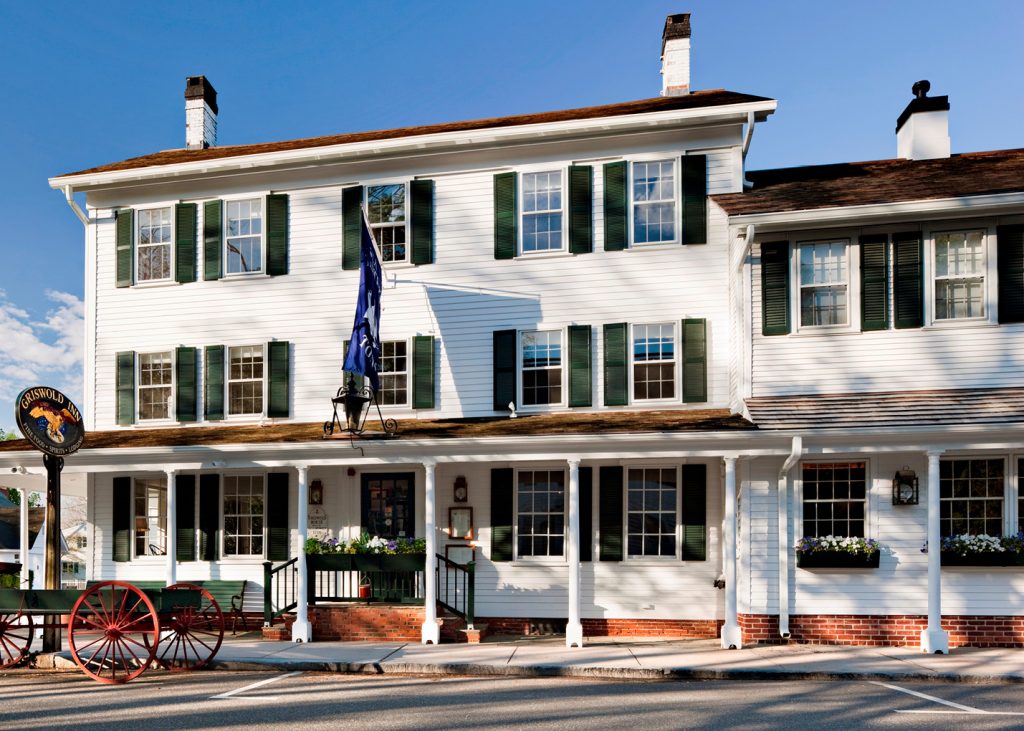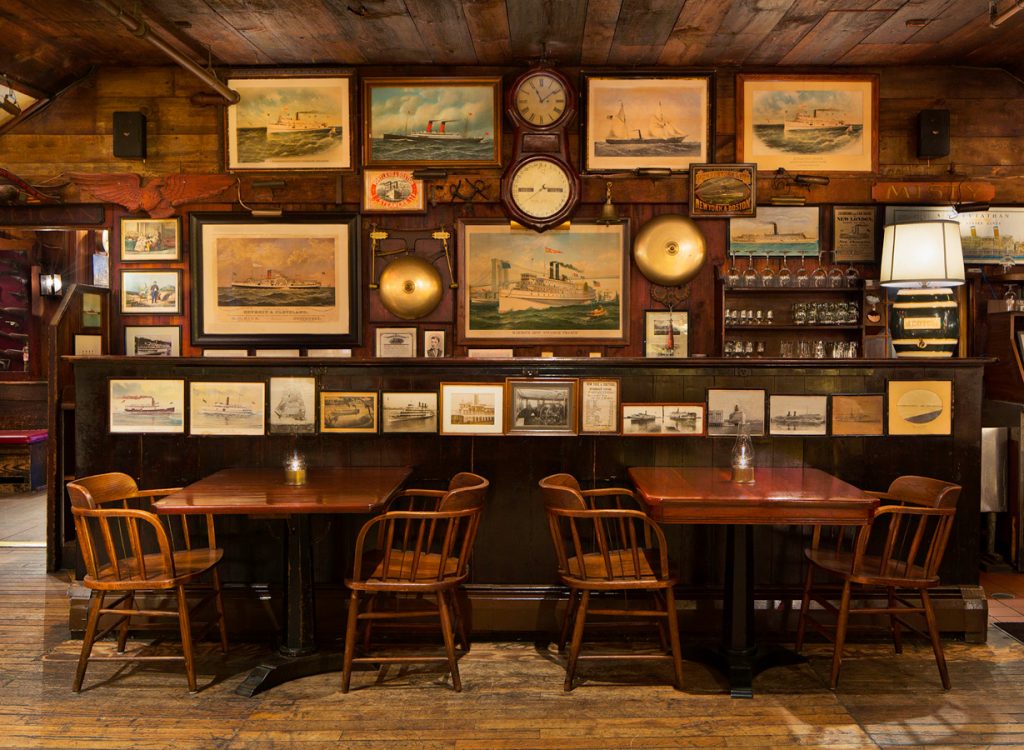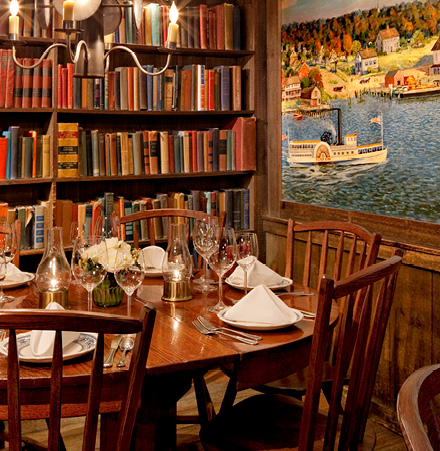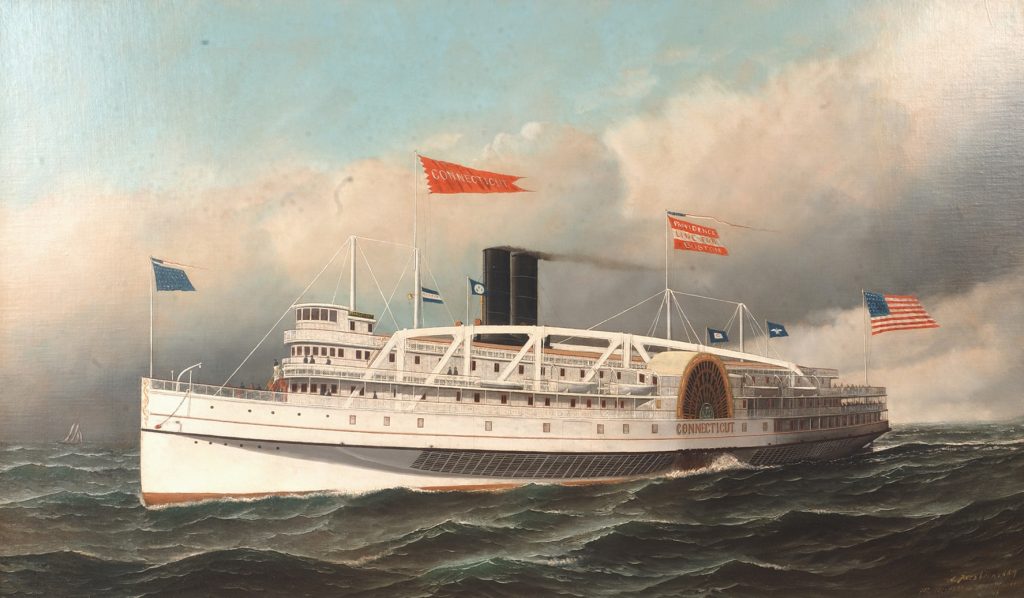Technically, it’s the first two but certainly it also fits some definitions of a museum. It is a repository of historical, artistic and cultural objects on display – simply, there are no guards and there’s no admission fee!

The Griswold Inn has operated since 1776. © Robert Benson Photography
We’re referring to The Griswold Inn, the oldest continuously operated inn in America, located on Main Street in Essex, Connecticut, where it has been comfortably situated for over two centuries. The ‘Gris’, as it is affectionately known by anyone who has visited at least once, opened its doors for business in 1776 – a community hub offering fine food, spirits and lodging to neighbors and seafarers. It still serves that same function today, welcoming visitors from all over the world, whether traveling to Essex by land or sea.
One may briefly consider some other establishment they have visited, claiming an earlier date of origin. While that may be true, one finds with a bit of research, that said inn had been boarded up for a time or converted to a private residence at some point in its history: not so The Gris. Through war – the British actually raided Essex during the War of 1812 and commandeered the Inn as its headquarters for a period of 24 hours – Prohibition, the Great Depression and the recent pandemic, the Inn has continued to serve.
During Prohibition The Gris was actually a speakeasy, with rum running taking place from the foot of Main Street right to its back door. Through Yankee ingenuity, The Griswold Inn has steadfastly remained relevant and in business despite often daunting circumstances and a rapidly-changing world.

The walls of the Covered Bridge Room are covered with maritime art. © Caryn B. Davis/carynbdavis.com
The Inn houses the largest maritime collection in private hands today. Art and artifacts are on display throughout its public spaces: four historic dining rooms, a Tap Room (which predates the Inn as a 1735 Essex schoolhouse), and its newest addition, The Wine Bar & Bistro. The collection tells the story of steamboating, the maritime heritage of the region and Connecticut, and even our nation’s earlier history.

Fine dining in the Essex Room © Robert Benson Photography
The largest of the Inn’s historic dining rooms, the Covered Bridge, features the most expansive display of mostly maritime art, hung side-by-side, covering the walls and even areas of the ceiling. A mix of what would be considered “important art” of value resides alongside more decorative pieces of their day: though not of great monetary significance, they greatly contribute to the overall “drama” and ambience of the space.
Co-owner/innkeeper Geoffrey Paul, expert on the Inn’s collection, says, “If you collect marine art and you believe in heaven, this is what it looks like.”
The Gris Wine Bar, though a newer space relative to the adjacent dining rooms, continues the expression of maritime art. This is mostly where “new” pieces of significance are exhibited, added to the Inn’s renowned collection during the Paul family’s 28-year tenure. The art is displayed as it would be in a museum, with ample space around each piece and title cards alongside providing brief descriptions. Though one must visit the space to fully appreciate its content, a few notable works are worth highlighting.
The Steamer “Connecticut” is a striking painting of a steamship set against the Wine Bar’s deep red walls in its original, gold-gilded frame. It is, perhaps, one of the most important paintings by renowned and prolific ship portrait artist Antonio Jacobsen. It is truly a masterpiece and shows the craft at a powerful 3⁄4 perspective, in all her glory.
Another of the most beloved in the extensive collection of steamboat art is a sketch by Norman Rockwell, “Steamboat Race on the Connecticut.” It’s a charming study done for a large oil painting now owned by master storytellers George Lucas and Steven Spielberg, on display in their Museum of Narrative Art.
Perhaps the most intriguing and eye-catching piece in this stunning space is the 18-foot mural, original to the former Steamboat Dining Room. It depicts the way Essex and its harbor appeared at the turn of the 20th century, when steamboats were in regular service on the Connecticut River. The mural is set on a motorized rocker so when the “switch is flipped” the mural gently tilts from port to starboard. Today, the mural serves as the backdrop of the bar, framed by wine bottles and is only turned on upon request.

The Steamer “Connecticut” by Antonio Jacobsen/Griswold Inn Collection, Paul Foundation, Essex, CT
Seafarer or landlubber, there is so much to take in and admire in this museum of living history. It provides a unique place to enjoy a drink or a meal surrounded by art – to absorb history, and in so doing, create your own.
The Griswold Inn is located at 36 Main Street in Essex and features New England fare in its historic dining rooms, tavern fare in its Tap Room where live music is also served up several nights a week, and a more contemporary culinary experience in its Wine Bar & Bistro. The Inn offers 34 guest accommodations and also has a store, Goods & Curiosities, located just across the street from the Main Inn. For more information, call 860.767.1776 or visit griswoldinn.com. ■
